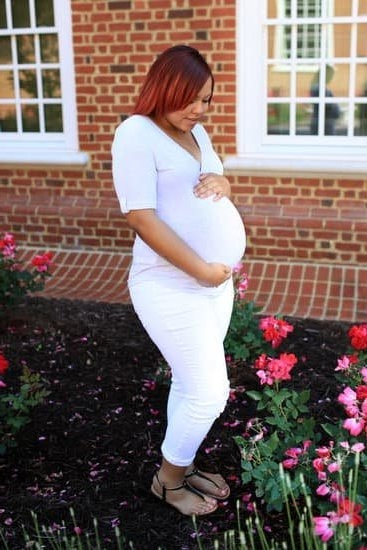Curious about cat pregnancy? Understanding the reproductive cycle and signs of pregnancy in cats is essential for any pet owner. Cats have a unique reproductive cycle that differs from other animals, and it’s important to know what to expect during this time. In this article, we’ll explore the different stages of cat pregnancy, how long it lasts, and what to expect during and after birth.
During cat pregnancy, there are several signs and symptoms that can indicate your feline friend is expecting kittens. From changes in behavior to physical changes, it’s important for pet owners to be able to recognize these signs. Additionally, understanding the duration of cat pregnancy and providing proper care and nutrition for pregnant cats is crucial for the health of both the mother and her kittens.
Stay tuned as we delve into the various aspects of cat pregnancy including signs and symptoms, care and nutrition, preparing for the arrival of kittens, monitoring the health of the pregnant cat, and what to expect during and after birth. Whether you’re a first-time cat owner or have experience with feline pregnancies, this article will provide valuable insight into caring for a pregnant cat.
Signs and Symptoms of Cat Pregnancy
During the early stages of cat pregnancy, it can be difficult to determine if a cat is actually pregnant. However, there are certain signs and symptoms that may appear as the pregnancy progresses. One of the most common signs is changes in behavior, such as increased affection or even mood swings. Some cats may also exhibit a decrease in appetite or experience morning sickness, leading to vomiting or nausea.
Physically, a pregnant cat’s belly will start to grow as the kittens develop inside her. This swelling may not become noticeable until a few weeks into the pregnancy. Additionally, the nipples of a pregnant cat may become larger and more prominent due to increased blood flow. Another physical sign is weight gain, but this can be more difficult to detect in long-haired cats.
Another key symptom of cat pregnancy is nesting behavior. This involves the mother-to-be finding a quiet and secluded spot to prepare for giving birth. She may also exhibit restlessness and begin searching for suitable places to give birth in anticipation of the arrival of her kittens. Overall, recognizing these signs and symptoms can help pet owners provide appropriate care for their pregnant feline companions.
It’s important for pet owners to be aware of these signs and symptoms so they can provide necessary support and care during their cat’s pregnancy. By being attuned to these indicators, owners can ensure that their cat receives proper nutrition, medical attention, and a safe environment during this formative period.
Understanding these signs and symptoms also allows pet owners to prepare themselves for the impending birth and take necessary precautions for both the mother and her kittens’ well-being after delivery.
Understanding the Cat Reproductive Cycle
The reproductive cycle of a cat is an essential aspect of understanding cat pregnancy. It involves several stages that play a crucial role in the overall process of pregnancy and birth. In this section, we will delve into the different phases of the cat reproductive cycle and what owners should expect during each stage.
Estrus Stage
The first stage of the cat reproductive cycle is known as the estrus stage, also commonly referred to as “heat.” During this period, which typically lasts around 4 to 10 days, female cats become sexually receptive and may display various behaviors such as increased affection, vocalization, and rubbing against objects. It’s important for owners to be aware of these signs as it indicates that the cat is ready for mating.
Matting and Fertilization
After the estrus stage, if a female cat successfully mates with a male cat, fertilization occurs within her reproductive system. This process can occur multiple times over a short period due to induced ovulation in female cats. Once fertilization takes place, the pregnancy journey begins.
Gestation Period
The gestation period refers to the length of time between fertilization and birth. The average gestation period for cats is approximately 63-65 days. However, it’s important to note that this timeline can vary depending on factors such as breed and individual health conditions. Understanding the gestation period is vital for ensuring that pregnant cats receive proper care and monitoring throughout their pregnancy journey.
How Long Does Cat Pregnancy Last
When it comes to cat pregnancy, one of the most common questions among cat owners is “how long does cat pregnancy last?” Understanding the duration of a cat’s pregnancy is important in order to provide the necessary care and preparation for the arrival of kittens. The gestation period for a pregnant cat typically lasts between 63 to 65 days, which is approximately 9 weeks.
During the first few weeks of pregnancy, it can be difficult to determine if a cat is pregnant just by looking at them. However, as the pregnancy progresses, there are certain signs and symptoms that can indicate a cat is expecting. Some of these signs include an increase in appetite, weight gain, enlarged and pink nipples, and behavioral changes such as seeking more attention or becoming more affectionate.
It’s important for pet owners to monitor their cats closely during this time and make any necessary adjustments to their care and nutrition. Providing a comfortable and stress-free environment for the pregnant cat is crucial for her health and the development of the kittens.
This may include adding a nesting box or bed where the mother can give birth and care for her newborns, as well as ensuring she has access to high-quality food specifically formulated for pregnant cats.
Care and Nutrition for Pregnant Cats
During cat pregnancy, it is important to provide proper care and nutrition to the expectant mother. This period is crucial for the health and development of the kittens, as well as for the well-being of the pregnant cat. Proper care and nutrition can help ensure a successful pregnancy and delivery.
Proper Nutrition
It is essential to provide a balanced diet for pregnant cats. The cat’s nutritional needs increase during pregnancy, so it is important to offer high-quality cat food specifically formulated for pregnant or nursing cats. These foods are rich in nutrients such as protein, calcium, and essential vitamins and minerals that support the health of both the mother and her developing kittens.
Regular Veterinary Check-Ups
During pregnancy, it is important to schedule regular veterinary check-ups to monitor the health of the pregnant cat. The veterinarian can provide guidance on nutrition, weight gain, and overall wellness. They can also address any concerns or issues that may arise during pregnancy.
Increased Water Intake
Pregnant cats should have access to clean and fresh water at all times. It is important to encourage increased water intake during pregnancy, as dehydration can lead to complications. Providing multiple water sources throughout the home can help ensure that the expecting mother stays properly hydrated.
By providing proper care and nutrition for a pregnant cat, owners can help ensure a healthy and successful pregnancy. Working closely with a veterinarian can also provide support and guidance throughout this important time.
Preparing for the Arrival of Kittens
As your cat’s pregnancy progresses, it’s important to start preparing for the arrival of the kittens. One of the first things you should do is set up a comfortable and quiet space for your pregnant cat to give birth. This should be a warm and cozy area where she feels safe and secure. You can use a large box or bed lined with soft blankets or towels for her to nest in.
It’s also essential to gather all the necessary supplies you will need for the birthing process and caring for the kittens. This includes items such as clean towels, heating pads, a newborn kitten care kit, scales for weighing the kittens, and emergency contact information for your veterinarian. Make sure these items are easily accessible when the time comes.
In addition to preparing a birthing space and gathering supplies, you should also give some thought to post-birth care for both the mother cat and her kittens. This involves ensuring that your pregnant cat is up-to-date on vaccinations and deworming, as well as discussing with your veterinarian about proper care and nutrition for the nursing mother and her litter.
| Item | Details |
|---|---|
| Birthing Space | Set up warm, cozy area with soft blankets or towels |
| Supplies | Gather clean towels, heating pads, newborn kitten care kit, scales, and emergency vet contact info |
| Post-Birth Care | Ensure vaccinations & deworming; discuss proper care & nutrition with vet |
Monitoring the Health of the Pregnant Cat
Cat owners should always monitor the health of their pregnant cats to ensure a safe and successful pregnancy. Here are some important tips for monitoring the health of a pregnant cat:
1. Regular Vet Check-ups: It is crucial to take the pregnant cat to the veterinarian regularly throughout the pregnancy. The vet can monitor the cat’s health, provide necessary vaccinations, and address any concerns or complications that may arise.
2. Proper Nutrition: Pregnant cats require a specific diet to support their growing kittens. Providing high-quality cat food that is designed for gestating cats can help ensure that the mother and her babies receive the essential nutrients they need. Additionally, it’s important to monitor the cat’s appetite and weight gain during pregnancy.
3. Observe Behavior and Physical Changes: Keep an eye on your pregnant cat’s behavior and physical changes. Look for any signs of distress, discomfort, or unusual behavior. You should also monitor her abdomen for changes in size and shape as her pregnancy progresses.
It is essential for cat owners to be vigilant about maintaining the good health of their pregnant cats by following these monitoring guidelines closely. Regular vet check-ups, proper nutrition, observation of behavior and physical changes are all critical aspects in ensuring a healthy and successful pregnancy for the expecting feline mother.
What to Expect During and After Birth
During the process of birth, also known as queening, it is important for cat owners to know what to expect. The duration of labor varies among cats, but the first stage typically lasts 12-24 hours. This stage may include restlessness, nesting behavior, and loss of appetite. It is essential for the pregnant cat to have a quiet and comfortable space to give birth, as she may become anxious or agitated during this time.
The second stage of labor is when active contractions and delivery of kittens take place. Each kitten is usually born within 30-60 minutes of one another, with most births occurring front feet first. However, some cats may also deliver them hind feet first. It is crucial for owners to monitor the process and ensure that each kitten is breathing and nursing from their mother.
After birth, it’s important not to disturb the mother and her kittens too much during the first few days. Keep them in a warm, quiet area where they can bond without interruptions. Provide plenty of food and water for the mother cat as she will continue needing extra nutrients while nursing her litter.
| Stage of Labor | Duration |
|---|---|
| First Stage | 12-24 hours |
| Second Stage | 2-6 hours per kitten |
Conclusion and Summary of Key Points
In conclusion, understanding the length of cat pregnancy is essential for every cat owner. Cat pregnancy typically lasts around 65 days, but it is important to remember that this can vary slightly from cat to cat. By recognizing the signs and symptoms of cat pregnancy and understanding the reproductive cycle, owners can provide the necessary care and nutrition for their pregnant cats.
Throughout the pregnancy, it is crucial to monitor the health of the pregnant cat, ensuring she receives proper veterinary care and attention. Additionally, preparing for the arrival of kittens involves creating a comfortable nest or birthing area and familiarizing oneself with what to expect during and after birth. This includes being aware of potential complications and knowing when to seek veterinary assistance.
By being knowledgeable about how long cat pregnancy lasts and following proper care guidelines, cat owners can help ensure a safe and healthy pregnancy for their feline companions. Being prepared for this exciting time will ultimately lead to a positive experience for both the mama cat and her new litter of kittens.
Frequently Asked Questions
How Can You Tell How Far Along a Cat Is?
You can tell how far along a cat is in her pregnancy by observing physical and behavioral changes. As the pregnancy progresses, her belly will enlarge, and she may display nesting behaviors.
How Many Kittens Will My Cat Have First Time?
A cat’s first litter typically consists of 3-5 kittens, but this can vary. Factors such as the cat’s age, breed, and overall health can influence the size of the litter.
How Long Does It Take for a Cat to Go Through Pregnancy?
The average gestation period for a cat is around 9 weeks, or approximately 63 days. However, this can vary slightly depending on the individual cat and her specific circumstances.

Welcome to my fertility blog. This is a space where I will be sharing my experiences as I navigate through the world of fertility treatments, as well as provide information and resources about fertility and pregnancy.





